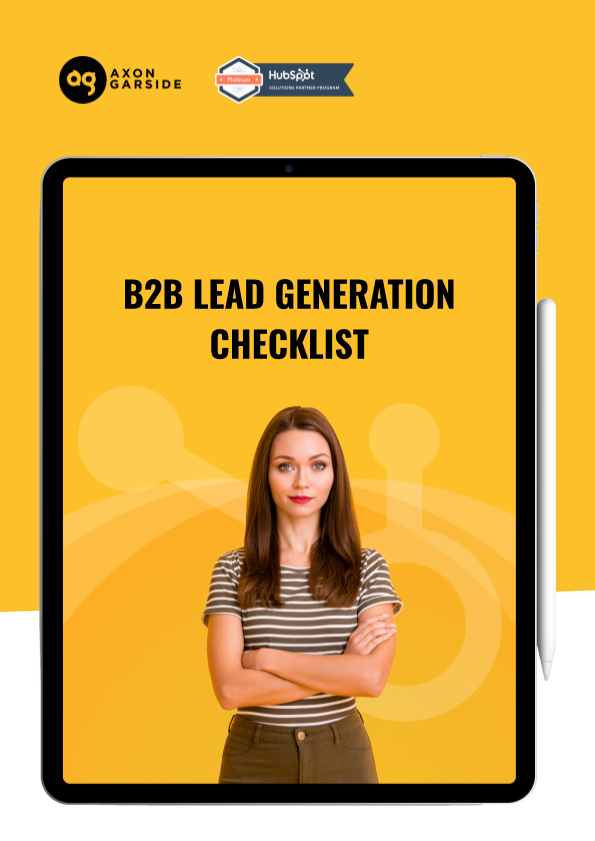5 signs your web copy isn’t engaging your visitors
Not getting a lot of leads through your website and aren't sure why? Here are some signs that your content isn't engaging enough - and how to fix it.

Like many B2B organisations, you have perhaps undergone a website redesign as part of a wider digital transformation project; and, like many, you were reasonably happy with the outcome: a shiny new site that looks good, showcases your business well and is reasonably easy to use. There’s just one problem - it’s not performing as well as you thought it would.
While there are many reasons a website may not be performing as well as it should be, there is one aspect in particular that may be the culprit, and it’s often the most overlooked when redesigning your website: web copy. Often sidelined in favour of the site design, web copy is one of the most common elements on a website that can be done wrong - even though it’s one of the most important.
So, could your web copy be the reason your ideal customers aren’t engaging with your business?
Here’s 5 signs your copy is to blame.
1. You have product or service pages, but don’t focus on the customer, or give enough detail
Think about your own buying practices - would you part ways with your hard earned money based on a few measly lines of text explaining a product or service that had no reference to how the product would help you specifically?
Probably not. So why do so many B2B organisations have web copy that does this on their website?
Whether it’s not wanting to give too much information away, or because the person writing the copy wasn’t clued up on all aspects of the product or service - it’s not going to get you anywhere. Today, buyers are educated, and they want to know everything they need to know about your product or service before making a purchase. However, many companies assume this relates solely to features, this still doesn’t give users the information they need. Sure, explain the different features your product or service has - that’s great - but you also need to show users why these features are a benefit to them. Your visitors will want to know how you can provide value - so show them!
Tip: Include an eye-catching “benefits” section on your product or service page, and explain the tangible benefits your product or service can provide for your customers.
2. You don’t reveal your pricing - at all
Now, this one is a tad controversial, as much like a magician never reveals his secrets, a B2B marketer doesn’t want to reveal their pricing. However, in the modern world where buyers can literally buy anything they need from just a quick google search - not having any indication of how much your products or services cost on your site is the first way to send your bounce rate soaring through the roof.
Again, think about your own buying habits - are you inclined to pick up the phone and speak to a salesperson in detail every time you want to buy something? No. So why should your customers?
Regardless of what industry you’re in or the complexity of your offering, a huge portion of your customers will want some indication of how much your product or service is going to cost them before purchasing. And, while you fear that showing your prices will leave you at a disadvantage to your competitors - the result is often quite the opposite. By showing your pricing, or giving a little indication of how much your various services cost, you can:
- Qualify leads much more easily - you’ll no longer have to spend time trying to convert a lead only for the deal to collapse at the last hurdle because they didn’t have the budget. Showing some level of pricing on your site helps you get the customers you need.
- Open up conversations - you don’t have to be so explicit in your pricing that customers are aware of exactly how much your services cost, you can just give them a rough estimate, which ultimately opens dialogue for a conversation with them.
No matter how you do it, including copy related to your pricing is always a great idea to start better engaging with your visitors.
Tip: Why not try a calculator? This way, visitors can figure out a rough estimate of cost based on their exact requirements, making them much more likely to contact you with enquiries.
3. It’s all about you, not them
If your homepage, or any page on your website mentions the words “we”, “us”, “our” more than a handful of times and the words “you” and “your” are nowhere to be seen, the chances are your website is too focused on your business, and not on your ideal customer. Like I previously mentioned, your web copy should focus on the needs of your buyers - not you. Part of selling to your customers and getting them to engage with you is knowing who they are, what makes them tick and how they behave on your site - which is why user journeys are so important when designing, or updating your website (luckily we wrote a blog on user journeys, check it out).
Tip: Regularly revisit your personas and user journeys, and ensure that your website is still up to date with your ideal customers’ journey and buying habits - particularly since under recent circumstances customer behaviour is constantly changing.
4. You don’t have any proof of the value of your product or service
As I’ve stated before, today’s buyer is educated - they know what they want, and they are wise to your selling tactics. If you state a reason why your products or services are valuable on your site - you’d better have the evidence to back it up.
Slightly threatening tone aside, this is how today’s buyers think - especially in the B2B world. They want to know how and why your offering has helped companies just like theirs, and the only way to do this is through impressive, engaging case studies and social proof.
Social proof is often stated to be one of the most important aspects of your site, and that hasn’t changed - in fact, in the current circumstances, potential customers need to know that they can trust you to deliver the results they need. The more specific your social proof the better - instead of just writing a case study, include photographs of the work you’ve done or the customers you’ve worked with (even add their LinkedIn profiles, if possible) as it humanises your business and allows prospects to see evidence that backs up your claims. Showing real people with real challenges that you helped solve will resonate extremely well with any prospective buyer.
Tip: Include social proof or case studies wherever you can on your site - even if it’s just a quick quote from an ex-client, the more the merrier. You could even create downloadable assets if your case studies are fairly in-depth.
5. You’re not letting visitors self-assess if your offering is the best fit for them
While this fits loosely under everything I’ve just talked about - it’s an important reason to include. Today, buyers want to have control over their own journeys; they no longer want to have to come to you with a list of their problems and listen to how you can solve them. They want to self-assess, and decide if you’re the right fit for themselves.
This can be a tricky one to digest, as many B2B organisations fear that embracing this approach will lead to missed opportunities. However, there are ways you can let customers self-assess without directing them off your site.
When redesigning your website, web copy shouldn’t be done once and forgotten about - in fact, writing should be something you’re doing constantly - whether it’s creating an FAQs page, or writing a blog. Your visitors want to answer their own questions - so let them. Publish articles on most commonly asked questions, try best fit calculators or use a quiz as an interactive tool where visitors are able to see which solution is the best for them. There are many ways to give your visitors the control they desire, while not losing your control entirely.
Tip: Keep on top of your current web copy, and adjust it if you find that visitors aren’t getting enough information, or they need more answers.
Now, it can be quite overwhelming to realise that your website is guilty of doing the 5 things listed above - but don’t panic, it’s easily fixable. Just remember: think about your users in everything you do on the site - this should make it easier.
However, web copy is just one of the aspects of your site to improve in order to see better results. For true success, you need to think about how all aspects of your site contribute to making a better experience for your visitors - one that will prompt them to do business with you. That’s why we’ve created a free B2B lead generation website checklist; containing everything you need to know to start generating more leads than ever before.
 Lauren Nuttall
Lauren Nuttall

